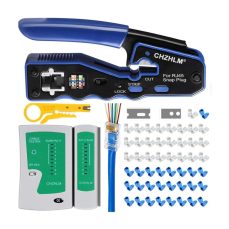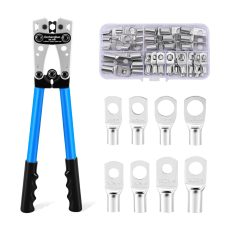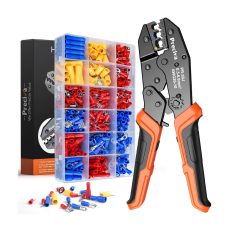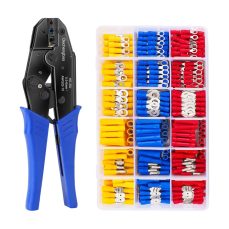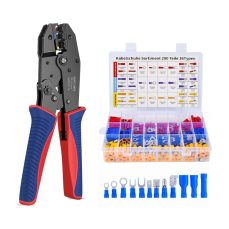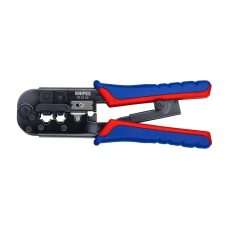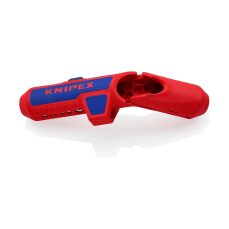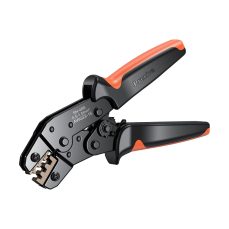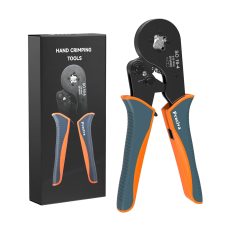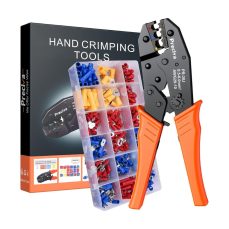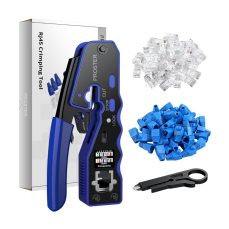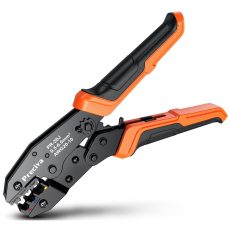Top Crimping Tools: Everything You Need to Know
Top Crimping Tools are indispensable for creating secure and reliable connections in various applications. Whether you’re working with electrical wiring, hydraulic hoses, or plumbing, the right crimping tool can make all the difference. This comprehensive guide covers everything you need to know about crimping tools, including the best tool sets, types, and features to look for.
What is Crimping?
Crimping joins two pieces of metal by deforming one or both to hold the other in place. This technique commonly attaches connectors to cables, creates secure connections in hydraulic systems, and more. Crimping tool apply pressure to deform the materials, ensuring a strong and reliable connection.
Types of Crimping Tools
- PEX Crimp Tool: Designed specifically for PEX piping systems, this tool ensures secure connections between PEX pipes and fittings. A PEX crimp tool is essential for anyone working with plumbing systems using PEX tubing.
- Hydraulic Hose Crimper: This type of crimper uses hydraulic pressure to crimp large hoses and fittings, making it suitable for heavy-duty applications. Hydraulic crimping tools are ideal for industrial and automotive uses.
- Wire Crimper: A versatile tool used for crimping electrical wires to connectors. Wire crimpers are essential for electrical work, including automotive repairs and home wiring projects.
- RJ45 Crimping Tool: Specifically designed for crimping RJ45 connectors used in Ethernet cables, this tool is crucial for networking and telecommunications tasks.
- Ferrule Crimper: Used to crimp ferrules onto the ends of wires, ensuring a secure and reliable connection. Electricians and industrial workers often use ferrule crimping tools.
- Swaging Tool: Shape or deform materials, similar to crimping tools, and are commonly used in metalworking and fabrication processes.
- Hydraulic Crimping Tool: This tool combines hydraulic pressure with crimping action, providing a powerful solution for crimping tasks that require significant force.
Features to Look for in Crimping Tools
- Precision and Accuracy: For reliable connections, choose crimping tools that offer precise crimping action. Tools like the Knipex crimper and Milwaukee crimping tool are known for their accuracy.
- Durability: High-quality crimping tools are built to last. Look for tools made from robust materials and with strong construction to withstand frequent use. The Milwaukee crimper and hydraulic crimping tools are examples of durable options.
- Ease of Use: Ergonomic design and ease of handling can make crimping tasks more efficient and comfortable. Tools with ergonomic handles, like the Knipex multicrimp, reduce hand strain during extended use.
- Versatility: Some crimping tools offer multiple functions or interchangeable dies, allowing you to handle various crimping tasks with a single tool. The SVH 21T P1 1 and other multi-functional tools offer versatility.
- Adjustability: Tools with adjustable settings or interchangeable dies can accommodate different sizes and types of crimps. This feature is particularly useful for professionals who work with a variety of materials.
Popular Crimping Tools and Their Applications
- Milwaukee Crimper: Known for its power and precision, the Milwaukee crimping tool is a top choice for both professionals and DIY enthusiasts. It’s suitable for a range of crimping tasks, including battery cable and hydraulic hose crimping.
- Knipex Crimper: Knipex offers high-quality crimping tools that are celebrated for their durability and ergonomic design. The Knipex multicrimp tool is versatile and ideal for various crimping applications.
- Hydraulic Hose Crimper: Essential for heavy-duty applications, hydraulic hose crimpers provide the force needed to securely crimp large hoses and fittings.
- RJ45 Crimping Tool: This tool is crucial for assembling Ethernet cables. It ensures secure connections for network and data communication applications.
- Copper Crimping Tool: Designed for crimping copper connectors and terminals, this tool is perfect for electrical wiring and installations.
How to Use a Crimping Tool
- Select the Right Tool: Choose a crimping tool that matches the type and size of the connector or fitting you are working with.
- Prepare the Wire or Hose: Strip the insulation from the wire or prepare the hose according to the manufacturer’s instructions.
- Position the Connector: Place the connector onto the end of the wire or hose, ensuring it is properly aligned.
- Crimp the Connection: Use the crimping tool to apply pressure and deform the connector, creating a secure and reliable connection.
- Inspect the Crimp: Check the crimped connection to ensure it is tight and secure. A proper crimp should have no loose or incomplete connections.
Choosing the Best Crimping Tool for Your Needs
Selecting the best crimping tool depends on your specific requirements and the types of tasks you perform. Consider the following:
- Application: Identify whether you need a tool for electrical work, hydraulic systems, or plumbing. Select a tool specifically designed for that application.
- Material: Verify that the tool works with the materials you use, such as copper, aluminum, or plastic.
- Budget: Although high-quality tools may cost more, investing in a durable and reliable crimping tool can save you time and effort over time.
Conclusion
Crimping tools are essential for creating secure and reliable connections in a variety of applications. From PEX crimp tools and hydraulic hose crimpers to wire crimpers and RJ45 crimping tools, choosing the right tool can greatly impact the quality of your work. By understanding the features and applications of different crimping tools, you can select the best tool set for your needs and achieve optimal results in your projects.

